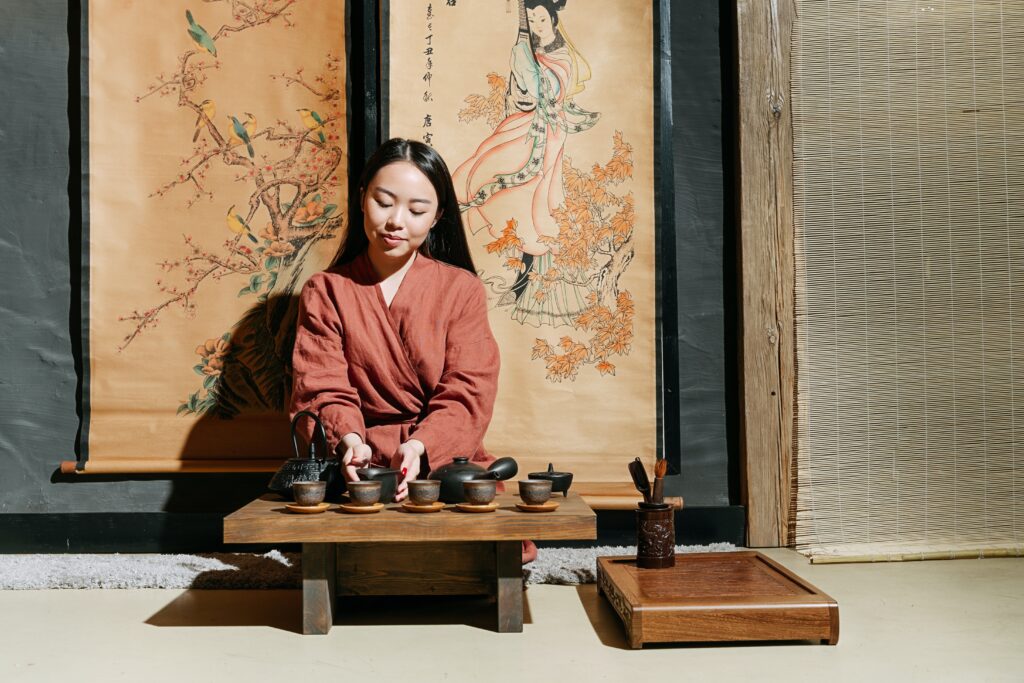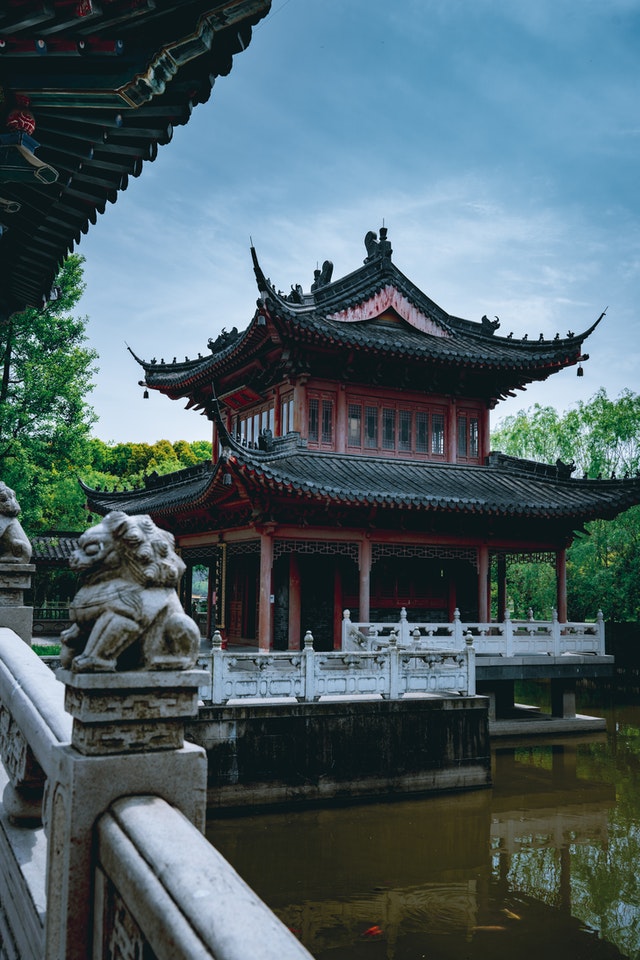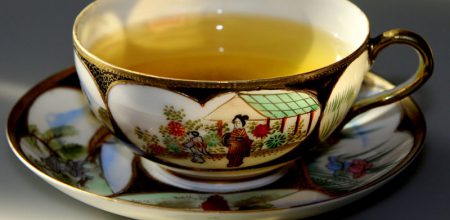In Chinese culture, tea has been regarded as a symbol of peace, spirituality, and longevity for centuries. Green tea is a type of tea made from the first harvest of the new tea leaves, which give the tea its green color. Green tea is often considered the safest and healthiest type of tea for consumption. You can find out more about the hidden power of green tea history from ancient China, which has been lost over the centuries. ancient Chinese discovered the power of aromatherapy and medicinal benefits of green tea long ago. Discover the hidden power of green tea. Click To Tweet
Time Periods Of Tea – Secret History
Wei Jin Dynasties (3rd to 6th century)
Tea drinking became quite popular during the rule of the Wei Jin dynasty, and it spread from the aristocrats to the populace. To counteract the bitterness of green tea, scented teas were produced.
Tang Dynasty (7th to 10th century)
During this period, tea drinking grew ingrained in Chinese culture, and more formal tea rituals were established. During this time, steaming of green tea leaves became popular, resulting in a more refined and flavorful beverage.
Song Dynasty (10th to 13th century)
During this time, the notion of tribute teas was born. The Emperor and other nobility were given these high-quality teas. Because everyone wanted to try Emperor’s tea, this practice resulted in the creation of new varieties of green teas, and the quality of brews improved.
Ming Dynasty (14th to 17th century)
Emperor Zhu Yanzhang eliminated authority over the manufacture of top quality Chinese green tea, ushering in the Golden Age of green tea. During this time, loose green tea blossomed.
ORGINS OF GREEN TEA
Green tea has grown in popularity across the world as a result of its numerous health advantages, well-known detoxifying capabilities, and low caffeine level. You’d think that being green in color is a requirement for being labeled as “green tea”? While this is somewhat accurate, technically, green tea is any tea that has not gone through the oxidation and withering process that all black teas go through. While not all green tea must come from China, all tea does originate in ancient China. This is where our tea history begins, in the kingdom of the Dragon, more than 5,000 years ago (yep, you read it properly!).
It’s difficult to believe that the mug of loose specialty tea you’re sipping now can connect you to almost 5,000 years of human cultural evolution, all the way back to ancient China. if you consider that all tea plants since (across the globe) are all descendants of those original trees in China, you start to realize how interconnected we all are and that tea through the ages and from around the world joins us all.
“The” Religion part of tea
In Chinese tradition, it is believed that gods of agriculture chew plant leaves, roots, and stems to uncover valuable herbs for humans. And that if any of these gods ate something deadly by accident, they would detoxify and heal themselves by chewing green tea leaves. For millennia, tea has been a thriving component of not just China’s social fabric, but also its religion. Some even think that Buddha found Chinese green tea as a divine gift.
Accidental Discovery of Green Tea
The first stories of the discovery of green tea were uncovered almost 5,000 years ago in the southwest portion of China, during the reign of Shennong, a legendary Chinese emperor and herbalist. It is stated that when his caravan was resting on one of his journeys, a few green tea leaves slipped into a cup of hot water the Emperor was sipping.
He sipped the water without seeing how black it had become. He felt rejuvenated afterwards and ordered his men to brew the beverage by adding green tea leaves from now on, consuming numerous cups of tea every day.
Whether or not this Emperor discovered green tea, it is undeniable that Chinese green tea has been enjoyed for generations in China and across the world.
Become societal norm
While ordinary people drank tea with their meals to refresh themselves, the nobles saw green tea consumption as a mark of status and utilized it in special rituals.
By the 5th century AD, daily green tea intake had practically become a societal norm in China. Tea was enmeshed in China’s cultural fabric by then, with formal tea rituals taking place during important social events and occasions.
The first formal records of Chinese people drinking tea date from the eighth century. It was written that heating green tea leaves stopped them from becoming dark (or oxidizing, as in the case of black tea fermentation) and preserved their distinct flavor. People in China found a new way of frying green tea leaves called fixing almost 400 years later, in the 12th century.
Chewing tea
The tea plant leaves, Camellia sinensis, grew wild in the mountains of southern China, and the native Chinese chewed them initially. They like the flavor and chewed or ate the fresh leaves for pleasure (much like modern chewing gums), presumably unaware of the caffeine effects. They really learned to drink green tea by boiling the leaves later, which is quite similar to how Ethiopians learned to drink coffee.
Green coffee beans were consumed by local tribesmen before they learned to roast them and make a hot beverage. The fresh leaves or berries were processed and added to boiling water, releasing a new world of flavors. As you might imagine, this was a welcome change from drinking simply water, and it also lowered the chance of being ill from drinking polluted or unclean water. While we now understand the health advantages of drinking green tea on a regular basis, it was first popularized for its flavor and to be drank with meals to aid digestion (like we do in most Chinese restaurants in Europe or North America today).
How is green tea made?
Frying and steaming are two methods for preventing oxidation of green tea leaves that are still used in China, Taiwan, Korea, and Japan today. However, as time has passed and more contemporary technology has been introduced, the method of manufacturing green tea has changed and become more polished.
This has been mostly motivated by the desire to increase efficiency and lower costs, but there has also been a growing global demand for healthier organic loose tea, flavoured iced tea beverages, and Japanese matcha tea powder.
Fixing green tea leaves is now a highly refined process that uses cooking techniques such as roasting and baking in a hot wok for a short period of time – this effectively stops the deterioration or wilting of the freshly picked leaves, allowing the leaves to be preserved in this state for several years before losing their freshness.
HOW IS GREEN TEA MADE
Frying and steaming are two methods for preventing oxidation of green tea leaves that are still used in China, Taiwan, Korea, and Japan today.
However, as time has passed and more contemporary technology has been introduced, the method of manufacturing green tea has changed and become more polished.
Like in all industries this has been primarily driven by the need to improve efficiencies, reducing costs but also a growing worldwide demand for healthier organic loose team, flavoured iced tea drinks and Japanese matcha tea powder.
Fixing green tea leaves is now a highly refined process that uses cooking techniques such as roasting and baking in a hot wok for a short period of time – this effectively stops the deterioration or wilting of the freshly picked leaves, allowing the leaves to be preserved in this state for several years before losing their freshness.
With the desire for high-quality, provenance, and organic teas, tiny artisan farmers are resurrecting to produce some delectable teas: a nice break from mass production and a return to the ancient Chinese tea masters’ practices.
What did you find most interesting about the history of green tea?
Be sure to comment and remember: Stay Healthy and Drink Healthy






